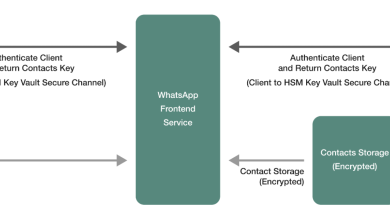Ecommerce Conversion Rates for 2024
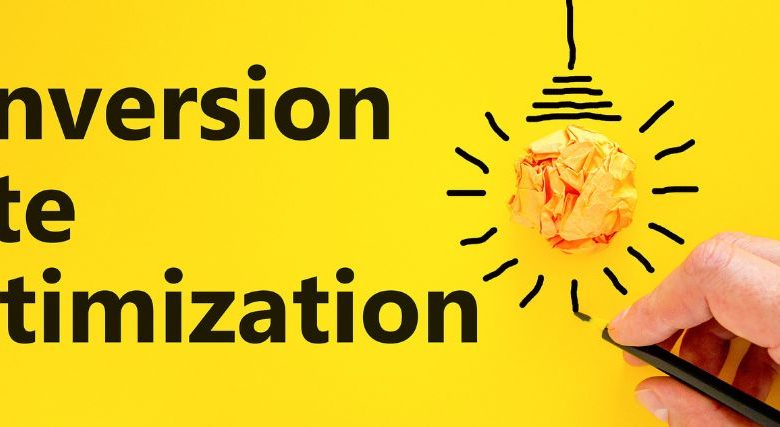
You know this basic truth as an ecommerce business owner: your success is only as good as your ecommerce conversion rate.
Technically, your conversion rate is the percentage of your ecommerce visitors that convert by doing the action you ask them to do. This can be clicking a link, pressing a Call To Action (CTA) button, or making a purchase.
Bottom line, no matter what you do and ask them to do, if these don’t eventually contribute to converting your site visitors into new and frequently returning customers, your ecommerce business will fail.
So, what is a good ecommerce conversion rate to benchmark for your business?
What are the key factors you must watch out for that significantly affect your ecommerce conversion rate?
How do you ensure that you consistently improve your ecommerce conversion optimization?
This guide helps you answer these questions.
You will have a better understanding and control of how to ensure all your business activities contribute to ecommerce conversion optimization by learning from this guide.
As of 2023, there are 2.64 billion digital buyers in the world, almost 54% of the 4.9 billion who can access the internet. This has been growing at around eighty million people a year since 2020, projected until 2025.
You want to get your best share of this pie and convert them into your buyers.
What would be a good ecommerce conversion rate to go by?
What Is A Good Conversion Rate For Ecommerce?
It depends on the data source and context.
Can I Use Average Ecommerce Conversion Rates?
No and yes.
For example, from February 2022 until February 2023, based on Oberlo’s drop-shipping data, the average ecommerce conversion rate across all industries has been fluctuating between the range of 1.30% to 2.13%. The lowest conversion rate was experienced in October 2022, while the highest surged two months later, in December 2022.
However, based on customer personalization software Dynamic Yield’s (DY’s) study, which covers 200M unique users over 300M total sessions, the average ecommerce conversion rate globally is 3.44%. This covers the period from April 2022 to March 2023, ranging from a low of 2.56% in February 2023 to a high of 4.51% in November 2022.
These were just the averages.
Are they “good” ecommerce conversion rates to benchmark for your business, then?
Not necessarily.
Although there are average conversion rates, there is no universal conversion rate.
Average conversion rates just give you a quick sense of ecommerce conversion rates in general, depending on the contexts of where they got their data from.
If you’re in drop-shipping, you would likely best be guided by the Oberlo data. If you’re in one of the markets that are also served by companies as diverse as Dynamic Yield’s clients, such as Ikea, Lacoste, Deckers, Sephora, Timex, and Yeti, you might want to be guided by the DY data.
Or, you can look for a more relevant and market-aligned research report for your particular market.
Free Expert-Recommended Retail Ecommerce Conversion Data Resources
For free industry sources to get retail ecommerce conversion data, we recommend the following free resources:
Ecommerce Conversion Rates For Useful Benchmarking
For useful benchmarking, you have to go deeper with more internal and external research.
You not only need to examine your particular market’s and industry’s latest ecommerce conversion rates, but you also need to study your target customers’ preferred devices and your products’ ecommerce conversion rates, for starters.
For example, the website monitoring solution ConvertCart shows that smartphone is the most used device for buying online. Their data covers products bought and devices used in the following sectors:
- Retail
- Electronics and home appliances
- Home decor
- Personal care products
- Cars and automobile parts
- Food and beverages
- Pet care
However, as of the second quarter of 2022, the average ecommerce conversion rate by device is higher for desktops, laptops, and tablets at 3%, compared to smartphones at 2%.
Adobe explains this in terms of consumer behavior: most people prefer browsing on their mobile devices and tend to do their research while on the go. But, when it comes to making a purchase, shoppers prefer to check out on their computers – laptop, desktop, or tablet – at home.
Still, this also depends on your target audience and their location. In Japan, for instance, 61% of ecommerce sales were on mobile devices, while in the United Kingdom, almost half of all online sales were made through smartphones.
You also have to regularly keep yourself updated on these since ecommerce is evolving fast, with a compound annual growth rate (CAGR) of 14.7% from 2020 to 2027.
For example, by product category alone, as of February 2023, the top eight product categories with the highest ecommerce conversion rates are:
- Arts and crafts, 4.04%
- Health and well-being, 2.89%
- Kitchen and home appliances, 2.47%
- Pet care, 1.98%
- Fashion clothing and accessories, 1.53%
- Sports and recreation 1.47%
- Food and drink, 1.34%
- Electrical and commercial equipment, 1.16%
Only two years before this, the top product categories and their ecommerce conversion rates looked different:
- Gifts, 4.9%
- Health and pharmacy, 4.6%
- Apparel and footwear, 4.2%
- Sports, 3.1%
- Jewelry and cosmetics, 2.9%
- Major chains, 2.3%
- Home furniture and decor, 2.3%
- Automotive, 2.2%
Regularly monitoring the ecommerce conversion rates for your particular market, industry, and product categories helps you assess where you stand and where you want to be by setting more realistic goals for benchmarking.
Ecommerce Conversion Rates By Industry, 2024

Let’s look at the top eight industries’ ecommerce conversion rates based on Dynamic Yield’s data, which was also the basis for an Oberlo report as of March 2023. Actually, these are the top seven ranked, with the Food and Beverage industry and the Fashion, Accessories, and Apparel industries tying at 2.81% ecommerce conversion rates:
- Multi-brand retail, 4.08%
- Pet care and veterinary services, 3.01%
- Food and beverage, 2.81%
Fashion, accessories, and apparel, 2.81%
- Beauty and personal care, 2.66%
- Luxury and jewelry, 1.73%
- Consumer goods, 1.72%
- Home and furniture, 1.18%
Based on Invespcro’s data taken from Statista, as of the fourth quarter of 2022, these were the top eight industries with the highest conversion rates. See how different they are just a quarter before the DY data using another data source:
- Food and beverage, 4.6%
- Beauty and skincare, 3.3%
Health and beauty, 3.3%
General footwear, 2.8%
- General apparel, 2.7%
- Beauty and makeup, 2.5%
- Sporting goods, 2.3%
Toys and learning, 2.3%
As of December 2022, across key consumer industries, these are the ecommerce conversion rate benchmarks:
- Arts and crafts, 3.84% to 4.07%
- Baby and child, 0.87% to 1.43%
- Cars and motorcycling, 0.65% to 1.35%
- Electrical and commercial equipment, 1.31% to 2.49%
- Fashion, clothing, and accessories, 1.01% to 2.20%
- Food and drink, 1.00% to 2.01%
- Health and well-being, 1.87% to 4.20%
- Home accessories and giftware, 1.55% to 2.34%
- Kitchen and home appliances, 1.72% to 3.00%
- Pet care, 2.20% to 2.53%
- Sports and recreation, 1.18% to 1.62%
By understanding your industry’s ecommerce conversion rate standards, you can compare them with your own conversion rates.
This guides you in assessing whether you’re doing well in your industry. If you find that you’re not, you’ll have taken a beginning step to learning how to rank better than your competitors in the industry.
You can then use this comparison as a starting point for moving your business forward.
What Impacts Conversion Rate In Ecommerce?

According to a Digital Commerce 360 2023 Ecommerce Conversion Report, there are six tactical approaches that retailers have found to significantly lift their ecommerce conversion rates: website design and speed, omnichannel services, right payment options, fast checkout with free shipping, live streaming, and personalization.
1. Website design and speed
A well-designed, easy-to-navigate, and fast-loading website entices customers to stay longer and make a purchase, while a poorly designed, difficult-to-navigate, and slow-loading website turns visitors off. This is especially crucial for ecommerce websites.
Avoid these common blunders in website design that decrease your chances for conversion:
- Ignoring user experience
- Using a no-grid system
- Not checking how your website looks on all devices
- Too much or too little content that is not relevant to your users
- Lack of white space
- Using low-quality images
- Using too many different fonts
- Using traditionally vertical scrolling pages instead of horizontal parallel scrolling pages
- Lack of a search bar
- Confusing or hidden navigation menu
- Misleading buttons and links
- Slow page loading times
2. Omnichannel services
The top 500 retailers that offered omnichannel services had a median ecommerce conversion rate of 3.73% in 2021, higher than the 2.90% median ecommerce conversion rate among retailers without omnichannel services.
Omnichannel services are assistance and advice offered to customers in a seamlessly integrated network of touchpoints and devices. These can include email, live chat, phone, social media, text, and even in-person interactions. Examples of omnichannel services are:
- Allowing customers to browse and buy online, then pick up their orders in-store (BOPIS) or via curbside pickup.
- Letting customers reserve online, then pay for and pick their reservations up in store
- Providing a store locator
- Providing in-store stock status
- Letting customers make in-store appointments
- Allowing for store returns
- Integrating 3PL services for streamlined order fulfillment and delivery
Regardless of the communication channel used, omnichannel services help provide and maintain consistently positive experiences for customers, which improves ecommerce conversion rates.
3. Right payment options
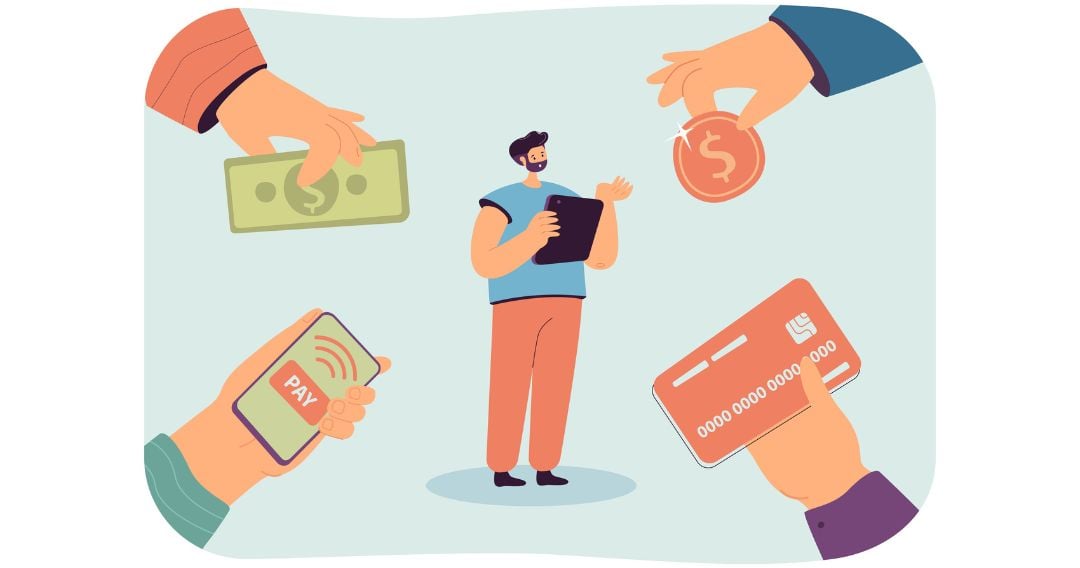
Lack of payment methods is one of the main reasons online shoppers abandon their shopping carts. With more and more people buying online now, not having the right payment methods can seriously impact ecommerce conversion rates. In addition, with alternative payment methods (APMs), e-wallets, less expensive cross-border payments, and localized payment solutions available today, payment methods have also become conversion funnels in themselves.
Focus on offering the right payment methods instead of offering as many payment methods as you can.
Research the most popular payment method in the market or country you are targeting. In Asia, consumers prefer to purchase using their mobile phones, while in the UK, debit and credit cards are most popular. In Germany, consumers prefer paying by invoice instead of through a credit card.
Also, segment your market by age and sex. Younger generations may prefer using Apply Pay or BNPL (Buy Now, Pay Later) options. Older generations tend to prefer paying by bank transfers or credit cards. Generally, more men (84.3%) buy online than women (77%). Although women buy more frequently, men spend more when they buy online.
Next, pick a reliable payment service provider (PSP). Ideally, they should offer multiple payment methods, so you don’t need to partner with multiple PSPs and track each integration you have with them. With a single PSP that offers access to hundreds of payment methods to merchants, you can track and manage through one contract, one platform, and one point of contact.
Forbes lists the top 7 best payment service providers for 2023, with different criteria:
- Best overall: Braintree
- Best for high-value transactions: Stax
- Best for customization: Stripe
- Best for retailers (which can include ecommerce): Square
- Best for volume discounting: Helcim
- Best for less-than-perfect credit: Merchant One
- Best for high-volume processors: Payment Depot
Once you have set up the payment methods, track and analyze their performance to determine which is the most secure, cost-effective, and best personalized to your target customers.
4. Fast checkout with free shipping
To maximize checkout conversion rates, your checkout process also needs to be streamlined by using a secure payment method. You should also make it mobile-friendly, offer a guest checkout option, keep the forms simple, keep the payment process on the same page, offer free shipping, and use faster delivery methods.
It is important to make it easier for your customers to check out. Avoid these other main reasons for cart abandonment are:
- Extra costs too high (shipping, taxes, other fees), 48%
- Website asks customers to create an account, 24%
- Delivery is too slow, 22%
- Unsecure site for credit card payments, 18%
- Too long/complicated checkout process, 17%
- Customers can’t see/calculate total order costs upfront, 16%
- Website has errors/crashed, 13%
- Unsatisfactory returns policy, 12%
Free shipping is a particularly powerful conversion lever. Nine out of ten online shoppers say free shipping is the top incentive to shop more, with 93% buying more when free shipping options are available. On the other hand, consumers are “somewhat likely” to cancel their orders if they find out at checkout that free shipping is not offered.
5. Livestreaming
Livestream commerce conversion rates are ten times higher than conventional ecommerce conversion rates. Blending entertainment and social connection to encourage instant online purchasing, live commerce creates more perceived value for online shoppers.
Instagram is the most frequently used platform, although YouTube is the most popular live commerce platform in the United States, with Instagram and Facebook close behind. Livestream selling is a particularly effective sales channel for luxury goods, with an average of 70% conversion rate.
The most popular livestream commerce categories are:
- Apparel and fashion, 36%
- Beauty, 8%
- Consumer electronics, 7%
- Furnishing and home decor, 4%
- Automobile, less than 1%
From $20 billion in 2022, the US livestream market alone is expected to reach $68 billion by 2026. In China, the live stream-selling market grew from $3 billion to $171 billion in just three years, reaching nearly $500 billion in 2022. Sixty-six percent (66%) of global consumers want retailers to be more digitally innovative, like offering livestream shopping.
Although it is still in its early stages in the United States, live streaming has leaped and bounded tremendously in China and other countries. Livestreaming is expected to be an up-and-coming powerful sales channel for retailers within the decade.
6. Personalization
Personalization impacts conversion, but it has to be done right. Companies that get personalization right generate 40% more revenue than those that don’t.
Personalization lets ecommerce companies create customized experiences for their website visitors. Personalization can include but is not limited to tailoring product recommendations based on user behavior and personalizing email marketing, mobile apps, display ads, and in-store/point-of-sale (POS) experiences.
Seventy-four percent (74%) of ecommerce companies have website personalization programs, with 62% of marketers saying that content is their most used format for personalization. Product recommendations and predictive customer service are the top two personalization uses.
Doing personalization right starts with collecting data on and thoroughly analyzing your customers’ behavior by segmenting them based on demographics, interests, and location, as their specific needs and defining reasons on why they purchase your products. Also, segment them based on the devices, browsers, and operating systems they use.
Then, compare the collected data to discover your customers’ behavioral patterns. Further analyze the results by key metrics such as ecommerce conversion rate, time spent on-site, page views, and customer lifetime value (CLV). You can also use session replay technology to record visitor interactions on your website.
From these, develop, test, and fine-tune a personalization strategy that nurtures connections between your business and your customers at key touchpoints in their customer journey with you.
What Is Conversion Rate Optimization (CRO) In Ecommerce?

Ecommerce conversion rate optimization (CRO) is the process of improving your ecommerce website to generate more sales.
Before you can generate sales, you need your website visitors to do what you ask them to do at every stage of their customer journey with you. When they do what you want them to do, they “convert.”
Ecommerce conversion optimization is important for ecommerce for two main reasons crucial to your business survival and success:
- Improving conversion rates increases sales and return on investment (ROI) to as much as 223%.
- Conversion rate optimization (CRO) saves you money in the long run because it results in highly-qualified leads at lower acquisition costs.
How To Increase Ecommerce Conversion Rate (Top 5 Optimization Tips)
Aside from addressing the six key factors that impact ecommerce conversion rates today, here are the top five (5) most effective ecommerce conversion optimization practices to adopt:
1. Use push notifications.
One of the best ways to generate high-quality leads and increase sales in your ecommerce store is by using push notifications. Push notifications have 50% higher open rates and seven times higher click rates than emails. Across industries, ecommerce tops the list of push notifications senders.
Web push notifications are tiny, clickable pop-up messages nudging users to take action. They appear on users’ home screens through web browsers, no matter which browser or device they’re using. Users opt-in to subscribe to push notifications before receiving them.
Recharge’s 2022 Subscription Commerce Report shows that 42% of subscribed customers stick with a business for at least a year after their initial purchase, compared to only 1% of non-subscription customers.
Push notifications benefit your business by enhancing customer experience, increasing customer engagement, helping in personalizing your marketing, improving customer retention, supporting upsell and cross-sell strategies, and boosting conversion rates by as much as 171%.
There are six important ways push notifications can be used to improve your CRO. They can be used in the following ways:
- Personalizing your welcome drip
- Alerting customers to your currently trending products
- Announcing inventory changes
- Tip-off customers on sales offers/promotions
- Recovering abandoned carts
- Re-engaging existing customers
Sign up for smart push notifications for free here.
2. Personalize for users with CTAs.
Although this was already introduced in the six key factors impacting ecommerce conversion rates, this bears elaborating as the importance of personalization in ecommerce cannot be over-emphasized. Ninety percent (90%) of consumers find personalization appealing, while 80% are more likely to engage with a business when it offers them personalized experiences.
In developing your personalization strategy, think through your marketing objectives while considering your target customers’ needs and stage in their customer journey. The following are key questions you need to answer clearly and thoroughly, from acquisition to conversion to growth, and retention:
How will you acquire them using personalization?
How do you craft personalized marketing and retargeting campaigns?
How do you recommend products tailored to their interests and needs?
How will you utilize cross-selling and upselling?
How do you retain them with loyalty discounts and special offers on their birthdays?
In answering these questions, you will need to collect more relevant data about your customers. You can do these through cookie-based tracking of their on-site behavior, from conversations and engagements with your Customer Support or artificial intelligence (AI) chatbots, scouring your customers’ email preferences, and installing quizzes on your website to better understand your customers.
You will likely need to use customer relationship management (CRM) software for all the data you collect to make sense of the information. From this, you can then develop, activate, then test and refine your personalization campaigns.
In personalizing your marketing messages to your target audiences, always include powerful call-to-actions (CTAs) to move them further along in their customer journey. This should be obvious, but many businesses forget to integrate this into their website, particularly in their home page headers, therefore missing out on a lot of opportunities for conversion.
With CTAs, you can prompt visitors to take action. This helps decrease bounce rate, provide easier navigation for your visitors, maximize customer retention, and boost your ecommerce conversion rates.
3. Integrate trust signals.
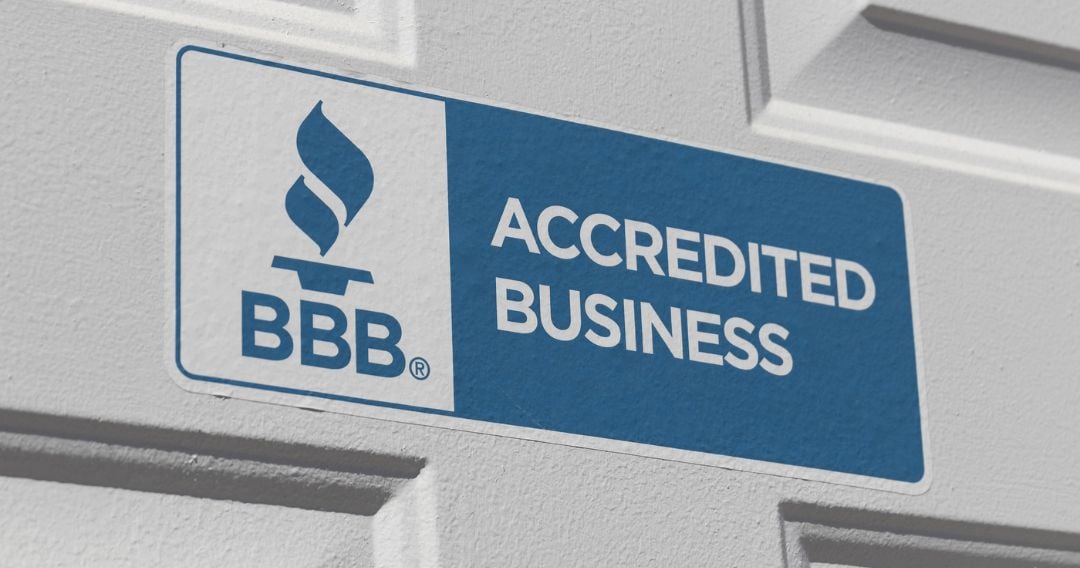
Today’s online markets are tricky to navigate for digital customers. They have thousands of options to select from and dozens of brands they may be discovering for the first time. How do you make your brand and products stand out from all these?
Integrate trust signals in your website and offers. If someone is discovering your brand for the first time, you need to establish their trust and build their confidence in buying from you again and again. Trust signals help with addressing this need.
Here are four types of trust signals you can start with integrating into your website and offers to optimize your ecommerce conversion rate:
- Associations: If you’ve partnered with some big-name brands, mention your association with them. Encrypt your website and display your Secure Sockets Layer (SSL)/Transport Layer Security (TLS) certificates, especially on your checkout page.
- Guarantees: Offer money-back guarantees within a certain time period if customers are not happy. This lessens their anxiety levels about buying from you and builds their confidence to actually make them want to buy.
- Memberships: Your business membership to accredited organizations, like the Better Business Bureau (BBB), for example, helps assure your shoppers that your business is a trustworthy one. Show your BBB seal on your home page, product page, and checkout page, too.
- Social proof: Collect and showcase testimonials from real customers who were happy with your products and services. Provide a space on your product pages for your customers to rate your products and services and add their reviews.
4. Capitalize on user-generated content (UGC).
User-generated content (UGC) is content your audiences and customers post about your brand, products, posts, and hashtags you use.
They can be in the form of blog posts and comments, YouTube content, images, videos, testimonials, product ratings and reviews, live streams, and other social media content.
Look for them using a social media aggregator tool. Showcase the ones that support your brand and message on your website and social media profiles. This creates an image and reputation for your brand of being authentic, unique, diverse, and dynamic, with a vibrant community of people who support it.
UGC not only strengthens your business’ credibility and increases brand awareness but also enhances user engagement and conversion. Visitors who interact with UGC in some way convert at a 102.4% higher rate than the average. The UGC type with the most powerful impact on conversion is Q&A, followed by ratings and reviews and user-generated imagery. Apparently, the key is UGC, which allows people to interact with your site, as well as other people.
Additionally, UGC improves your website’s ranking in search engine results, so more people can quickly find your site. It does this by helping create backlinks, boosting the content value of your site pages, increasing website traffic, and boosting user engagement.
5. Strengthen your abandoned cart strategy.
Abandoned carts commonly occur in ecommerce, with 7 out of 10 customers abandoning their carts. Abandoned carts represent lost revenue opportunities for your business, so it’s important for you to have a strategy in place to lessen your cart abandonment rate.
Start by crafting automated emails that not only remind your customers about their forgotten carts but also entice them to complete their purchases. Sweeten the deal by offering time-sensitive discounts or promotions like free shipping to convince them to convert.
Examine also why people are abandoning their carts on your site, and fix these hurdles to conversion. Are they incurring hidden costs while they are checking out, which were not made clear upfront? Does your checkout process take time and asks customers to fill out long forms? Do you have enough right payment methods for them? What else could be holding them back from purchasing?
For more tips, check out these 23 proven abandoned cart strategies that work to improve your ecommerce conversion rates.
If you want to make it easier for you, you can also hire a pre-vetted, industry-experienced conversion rate optimization consultant.
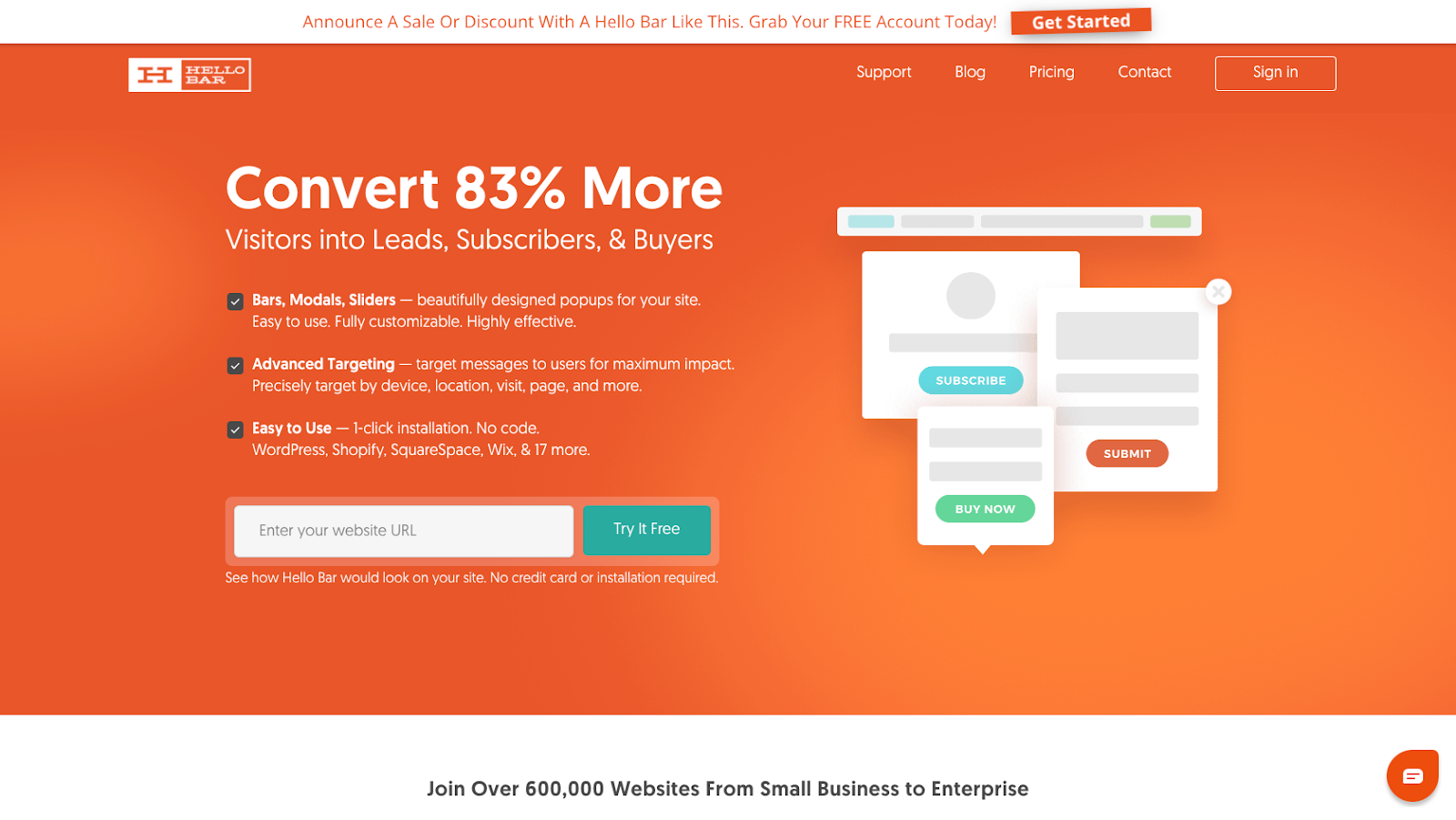
There are also conversion rate optimization tools you can use for the more specific needs of your website. The top recommended ones for each need are:
“Good” Ecommerce Conversion Rates Are Context-Specific
Anyone who tells you that the ecommerce conversion rate for your business is such-and-such percent may not be right. From reading this guide, you know that there is no one fixed universal conversion rate that applies to all businesses for all time.
When seeking a good ecommerce conversion rate to benchmark, you know you have to look at relevant data sources, with information appropriate for your particular market, industry, and product categories, at the very least.
You also know that ecommerce conversion rates change fast, even within a single year, so you need to keep monitoring them regularly.
Benchmarking the relevant ecommerce conversion rate for your business guides you in assessing how well you’re doing in your market, industry, and product categories. This, then, gives you the foundation to strategize how to grow your business by improving your ecommerce conversion rates.
With the six key factors that impact ecommerce conversion rates and the top five ecommerce conversion optimization tips you’ve learned from this guide, you’re well on your way to moving your business forward.
You also have the recommended resources for your additional research, ecommerce conversion tools, and hiring the best CRO consultants to make it easier for you.
All you need to do now is to use them.



